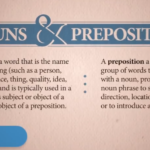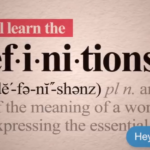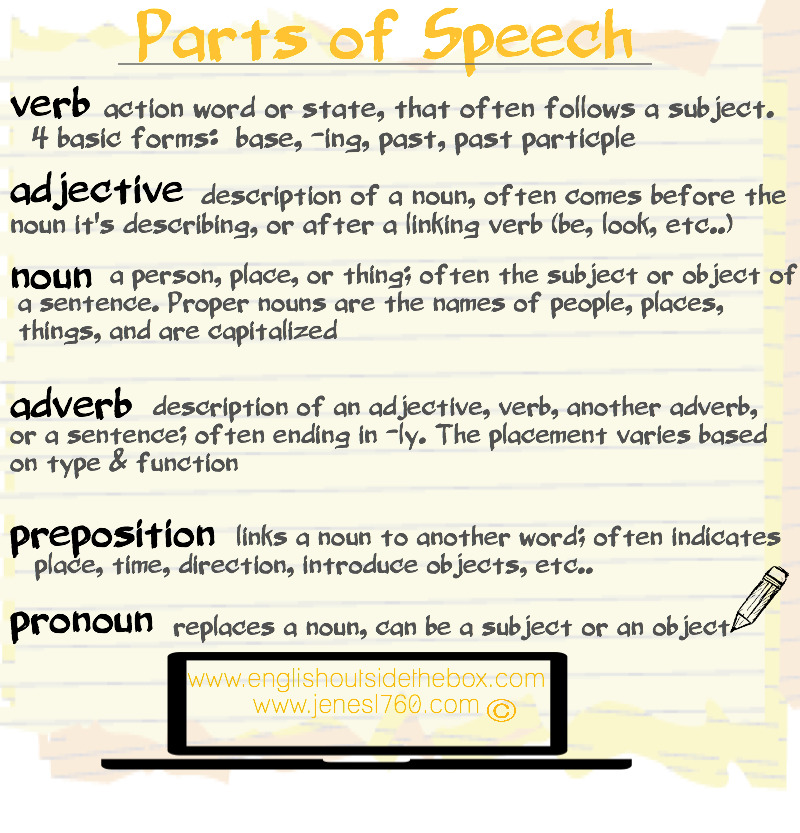Understanding Parts of Speech: Word Crimes [Part 2]
Hopefully by now you have heard, seen, read, or been exposed somehow to Weird Al’s new ‘hit’, “Word Crimes.” It’s fun, catchy, and even…educational! If you’re new visiting this site, WELCOME, and I invite you to check out my Word Crimes Part 1 post which reviews the vocabulary in his video. Reviewing the vocabulary of song lyrics is a great way to not only practice the obvious reading and spelling, but you can also read along and enhance your listening abilities too! With my vocabulary and definitions, you’ll be learning new words and all of this is happening while listening to music. Learning can be fun!
Part 2 is all about some grammar information, and furthering your knowledge of vocabulary. The various parts of speech in English help you create coherent and well-written sentences, and understanding their differences allow you to speak English more fluently. First let’s review some common parts of speech in English:
For quick reference, you can review this infographic describing parts of speech. For more details, see below.
VERBS:
There are different ways to categorize verbs. We can differ them by action VS non-action(stative), which means some verbs display actions or things we can actually see happening. Non-action, or stative verbs are those that indicate states, feelings, senses, ownership, things we can really psychically see. Some examples include: own, have, love, see, hear, believe, etc.. For a more extensive list, click here.
Another way to differ, would be by categorizing verbs by transitive VS intransitive verbs, which is important to know, especially when reviewing phrasal verbs. Simply put, transitive verbs take objects and intransitive verbs don’t. Consider the easy examples: kick (transitive) and die (intransitive).
Jennifer kicks the ball. || Jennifer (subject) kicks (verb) the ball (object) ||TRANSITIVE
The lion died. || The lion (subject) died (verb) || INTRANSITIVE because the subject is doing the verb, and nothing is “receiving.”
Verbs are often found after the subject of a sentence, after an auxiliary verb, and can also be in the various forms review above. Sometimes they act as nouns (gerunds/infinitives) so you’ll likely see them in a spot different than following a subject. If it’s the action of a sentence, you can generally assume it’s the verb.
ADJECTIVES:
Adjectives are almost always found before the noun it modifies: I like your yellow shirt. || yellow is the adjective modifying the noun, shirt.|| However, sometimes we’ll see an adjective at the end of a sentence, after a linking verb describing the subject: Her shirt is yellow. ||yellow is the adjective, but it’s modifying the subject “her shirt” and is after the linking verb “to be (is)”.|| Other languages often mix up this order, and try to put the adjective after the noun, but remember, this is incorrect! Adjectives are often used as comparatives, to compare 2+ nouns, or as superlatives, to compare many nouns in a group.
NOUNS:
Nouns are common in English, and have 2 types: common and proper. Common nouns are the everyday people, things, and places we see: girl, mother, attraction, park, city, country, etc. These are non capitalized. Nouns are often inaccurately described as “names;” however, this only applies to proper nouns. Proper nouns are names, they are capitalized, and are the specific names for the people: Jennifer (girl), Ali (mother), Eiffel Tower (attraction), Disney Land (park), San Diego (city), and the United States (country). Both common and proper nouns are found at the beginning of a sentence, as the subject, or after a verb, as the object (direct & indirect). These places are the most common for nouns.
ADVERBS:
Adverbs, as listed above, have many jobs/functions. They can be used to describe an adjective: That girl is very beautiful (“very” describes the adjective: beautiful). Adverbs also modify or give descriptions to verbs: Jennifer walks slowly (“slowly” describes the verb: walks). Sometimes adverbs need to be described, so an adverb will have this job as well: Jennifer walks extremely slowly (“extremely” is now the adverb describing the adverb slowly). Finally, an adverb will sometimes be used to describe an entire sentence: Unfortunately, your team lost the game (“unfortunately” is describing how unfortunate the sentence or idea of your team losing is). The placement of adverbs can be quite complicated, and vary depending on function. This is something you must review, and memorize in order to use correctly. Click here for more information, examples, and general rules to follow.
PREPOSITIONS
Prepositions can be a very difficult grammar point to accomplish, and quite complex. However, for a basic description and understanding, prepositions are words that link with nouns to give some additional meaning of location/place: I am sitting at home (“at” is stating the location of where I am sitting), direction: I am walking to the store (“to” connects with the store to say the direction I am walking), or time: I will call you on Monday (“on” is stating when I will call you). Luckily, Purdue OWL has an excellent online resource available for all to review with information, pictures, and examples. I encourage anyone reading to check out that link here.
PRONOUNS
Pronouns can replace nouns as the subject: I, you, he, she, it, we, they; or the object: me, you, him, her, it, us, them. These are some of the most commonly used type of pronouns; however, there are other types, such as: possessive, reflexive, demonstrative, relative, etc.. We will stick with the basics for this post, and if you’d like more information…please ask in the comment section! Possessive pronouns, show possession or ownership, are are: mine, yours, his, hers, its, ours, theirs. Reflexive pronouns are the pronouns ending in “-self/-selves” and are used to say the action is done by the person mentioned; ex: I bathed myself, meaning “I” did the action on my own; examples are: myself, yourself, itself, himself, herself, ourselves, themselves, Demonstrative pronouns are “this, that, these, those.” They are used to indicate items/things both near (this, these) and far (that, those), and are used singularly (this, that) or plural (these, those). Relative pronouns are: which, whom, who, that, whose, and are used with relative clauses (adjective clauses) but again, this goes much deeper into a grammar point that we won’t be reviewing in this article.
Now, you have some more information to understand how to avoid committing word crimes. Use this information carefully, and stay motivated in your English learning journey!
HAPPY STUDYING! ♥
If you like what you’ve read, or found it useful…please share with a friend/colleague/fellow English learner or lover.
The Conversation Club will provide you with 6 group conversation calls to practice with a real teacher and a group message community to connect with other members.
You will also get weekly English lessons to help your vocabulary, listening, reading, pronunciation, and more!
Try the Club for 1 week, free! Join the 1-week free trial here.



